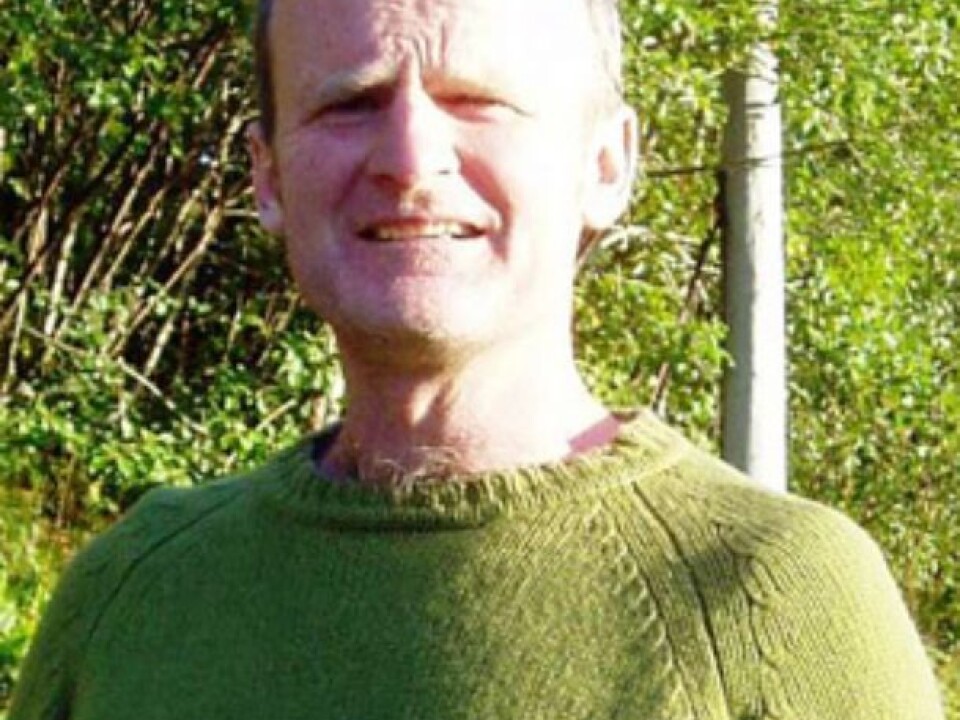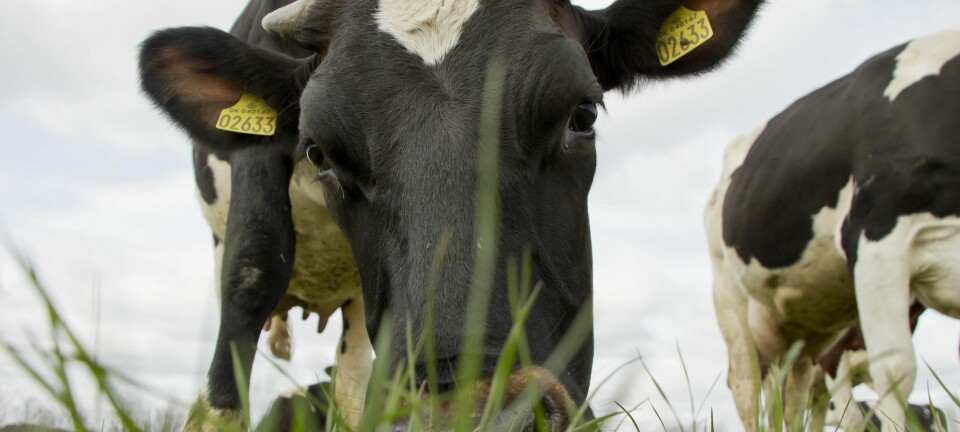
Moose are the new cows
The Eurasian elk, or moose, is filling in for cows as a forest browser. While Bessie is in the barn or an enclosed pasture, this big herbivore ensures continuity in the overall amount of browsing in outlying land in Norway.
Denne artikkelen er over ti år gammel og kan inneholde utdatert informasjon.
Dense thickets or open meadows? Wild and tame animals have different impacts on forest foliage.
Researchers at NTNU Museum of Natural History and Archaeology, the Norwegian Institute for Nature Research (NINA) and the University of Oslo have calculated how large herbivore pressure in the outfields of Norwegian municipalities has evolved in the past five decades.
The results are being published in the journal Wildlife Biology.
The changes are massive. Immediately after World War II the outfields and woods near farms in Norway were still in active use as grazing land for livestock. The most important of these were cows and young cattle. But sheep, goats and horses were also turned loose in these unfenced outfields. Stocks of moose, red deer and roe had dwindled.

Exit the cows
Norwegian sheep farmers still turn their livestock loose to browse in outfields. But cows are kept in pastures or barns.
It wasn’t so 50 years ago. If you took a walk in the woods in Eastern Norway, you hardly ever encountered a moose. But you would have a good chance of hearing cowbells.
“In 1949, typical patches of forest in Eastern Norway were teeming with livestock. Moose were a rare sight,” says senior researcher Gunnar Austrheim at NTNU Museum of Natural History and Archaeology.

On top of this bovine exodus another displacement of livestock has occurred – sheep have moved from the lowlands to the mountains.
Moose populations multiplied in the 1970s. Stocks of red deer, roes and to some extent tame reindeer have increased significantly.
Austrheim and his colleagues have calculated the pressure of large herbivores on the foliage in each of Norway’s municipalities for each decade from 1949 to 1999.
The figures were originally released in 2008, but have now been published internationally. No comparable studies have been made in other European countries.
Historical shift
In 1949 livestock were behind nearly all the browsing in outfields. Now wild animals in the deer family − cervids − out-chew their domestic chums.
This could be an historical reversion.
We would have to go back several hundred years, maybe longer, to find a time when domesticated animals played such a minor role.
Norwegians have always made use of the resources in the woods and since the advent of agriculture and animal husbandry the outfields have been important for browsing.
Eight tonnes
The increase in cervids has been so substantial that together with the contribution from tame reindeer it nearly makes up for the decrease in livestock browsing.
A single European bull moose can eat an estimated eight tonnes of greenery a year. With 150,000 moose in Norwegian forests in the summer, this adds up to some serious browsing pressure.
Researchers point out that moose and cows prefer different plants.
Moose and other cervids eat branches and shoots from trees, while cattle and sheep are mainly interested in grasses and other plants in the meadows.
As cervids and livestock select different plant species they impact the outfields in different ways. The browsing of livestock gives flowery meadows and woods with grassy floors whereas the browsing of moose and deer yields more heath and typical forest landscapes.
Open buffet
In the early 1950s Norwegian hunters shot about 5,000 moose a year. The huge increase in the moose stock enabled them to viably shoot 36,400 during the hunting season last year.
In the same period, the annual hunt on red deer rose from around zero to 39,100.
The decrease of livestock in the post-war period could be one of the factors behind the big increase in moose and other wild cervids.
“As browsing areas thicken and get overgrown there’s plenty of food available. A dramatic drop in livestock in the outfields occurred in the 1960s, and the members of the deer family had more on their plates,” says Austrheim at the NTNU Museum of Natural History and Archaeology.
Although livestock and cervids are not in direct competition for the same food, wild grassy fields and flowery meadows will slowly thicken with bushes and trees – because the livestock disappeared – creating ideal conditions for moose, red deer and roe deer.
Big differences
Even though the combined grazing pressure in Norway is now about the same as it was in 1949, there are big regional variations.
In the coastal municipalities on the West Coast total grazing pressure has fallen by half.
In Finnmark County in the far north this pressure has mounted because of a rise in tame reindeer.
The general picture varies a whole lot. Outfields in some municipalities are being over-browsed while others are less exploited than they could potentially be.
Currently the Ministry of Agriculture has ultimate responsibility for management of livestock and tame reindeer in outfields and woods, whereas the Norwegian Directorate for Nature Management has responsibility for moose and other deer.
“There should be a single government regulatory agency for managing livestock and cervids,” asserts Austrheim.
------------------------------------------------
Read the article in Norwegian at forskning.no
Translated by: Glenn Ostling































